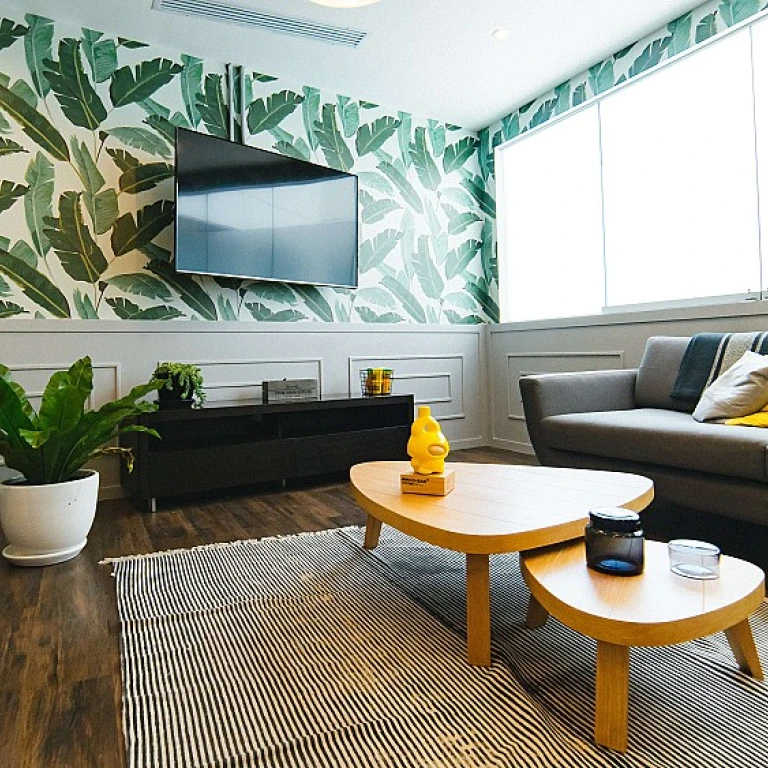
Understanding the basics of augmented reality in design
What is augmented reality and why does it matter in design?
Augmented reality (AR) is a technology that overlays digital elements onto the real world, blending virtual content with our physical environment. In the context of design, AR enables professionals to visualize and interact with digital prototypes, models, and interfaces in real time. This approach goes beyond traditional 2D screens, offering a more immersive and interactive experience for both creators and users.
Core principles of AR in virtual design
- Contextual visualization: Designers can place digital objects within real-world settings, allowing for more accurate spatial understanding and decision-making.
- Real-time feedback: Changes to virtual elements can be viewed instantly, streamlining the iteration process and improving collaboration.
- Enhanced interactivity: Users can manipulate and explore designs as if they were tangible, which is especially valuable in fields like interior design, architecture, and product development.
Key applications and benefits
Augmented reality is transforming how designers approach their work. For example, AR can be used to preview furniture in a room, test user interfaces in real environments, or simulate product usage before manufacturing. These capabilities help reduce errors, save time, and foster creativity. As AR tools become more accessible, their adoption is expected to grow across various design disciplines.
For a deeper dive into how AR is shaping the virtual design landscape, explore this in-depth analysis of immersion and interactivity in virtual design.
How augmented reality is changing creative workflows
Transforming the Creative Process with Augmented Reality
Augmented reality (AR) is not just a buzzword in the design world—it’s a catalyst for reimagining how creative teams approach projects. By overlaying digital elements onto the physical environment, AR enables designers to visualize concepts in real time and context, leading to more informed decisions and innovative outcomes.
One of the most significant shifts is the move from static mockups to interactive prototypes. Designers can now test spatial relationships, scale, and user interactions directly within the intended environment. This hands-on approach reduces guesswork and accelerates iteration cycles, making feedback more actionable and grounded in reality.
- Collaboration: AR platforms allow multidisciplinary teams to collaborate remotely, viewing and manipulating the same 3D assets simultaneously. This fosters clearer communication and faster consensus.
- Rapid Prototyping: Instead of relying solely on 2D sketches or screen-based previews, designers can build and adjust models in AR, streamlining the path from concept to execution.
- Client Engagement: Presenting ideas through AR helps clients understand the vision more intuitively, reducing misunderstandings and increasing satisfaction.
For a deeper dive into how AR is revolutionizing virtual design workflows and creating immersive user experiences, explore this comprehensive guide on immersive user experiences in virtual design.
As AR continues to evolve, its integration into creative workflows is set to become even more seamless, empowering designers to push the boundaries of what’s possible in virtual environments.
Enhancing user experience through augmented reality
Immersive Interactions and Personalization
Augmented reality (AR) is transforming how users engage with digital products by introducing immersive and interactive experiences. Unlike traditional interfaces, AR overlays digital elements onto the real world, allowing users to interact with virtual objects in their physical environment. This shift enables a higher level of personalization, as users can visualize products or concepts in their own space before making decisions. For example, interior design applications let users preview furniture at home, bridging the gap between imagination and reality.
Bridging Physical and Digital Touchpoints
One of the most significant impacts of AR in design is its ability to connect physical and digital experiences seamlessly. By integrating AR into mobile apps or web platforms, designers create intuitive pathways for users to access information, try out features, or receive guidance in real time. This approach not only enhances usability but also increases user satisfaction by making interactions more natural and context-aware.
Improving Accessibility and Engagement
AR can also improve accessibility for diverse audiences. For instance, visual overlays can provide step-by-step instructions or highlight important features, making complex products easier to understand. This technology supports inclusive design principles, ensuring that more users can benefit from digital experiences regardless of their technical background.
- Real-time feedback helps users make informed choices
- Interactive tutorials and guides boost learning and retention
- Personalized content adapts to individual preferences and environments
For a deeper dive into how qualitative concepts shape user experience in design, you can explore this analysis of qualitative concepts in design.
Challenges designers face with augmented reality
Technical and Creative Hurdles in AR Design
Augmented reality is transforming the design landscape, but it brings a unique set of challenges for professionals. One of the main obstacles is the steep learning curve associated with mastering AR-specific tools and platforms. Designers must adapt to new software environments and integrate them with existing workflows, which can slow down project timelines and require ongoing training.
Device Compatibility and Performance Issues
Another significant challenge is ensuring compatibility across a wide range of devices. AR experiences must perform consistently on smartphones, tablets, and dedicated AR headsets. This diversity means designers need to optimize assets and interfaces for different screen sizes, resolutions, and hardware capabilities. Performance bottlenecks, such as lag or poor tracking, can negatively impact the user experience and undermine the effectiveness of the design.
Balancing Immersion and Usability
Creating immersive experiences is a core goal in AR design, but it must be balanced with usability. Overly complex interactions or cluttered visual elements can overwhelm users. Designers need to prioritize intuitive navigation and clear visual cues to guide users through augmented environments. This often requires iterative prototyping and user testing to refine the experience.
Privacy and Data Security Concerns
With AR applications often relying on real-world data, privacy and security become critical considerations. Designers must ensure that their solutions comply with data protection regulations and respect user privacy. This includes transparent data collection practices and secure handling of sensitive information.
- Learning new AR design tools and platforms
- Ensuring device compatibility and performance
- Balancing immersive visuals with usability
- Addressing privacy and data security
Overcoming these challenges requires a combination of technical expertise, creativity, and a user-centric approach. As the AR ecosystem matures, designers who stay adaptable and informed will be best positioned to leverage its full potential in virtual design.
Tools and platforms for designing with augmented reality
Key Software and Platforms for AR Design
Designing for augmented reality requires specialized tools that bridge the gap between digital concepts and real-world integration. Today, several platforms stand out for their ability to streamline the AR design process and support creative workflows.
- Unity and Unreal Engine: These engines are widely used for building interactive AR experiences. Their robust libraries and real-time rendering capabilities make them favorites among professionals for both prototyping and production.
- Adobe Aero: This tool offers a user-friendly interface for creating AR content without deep coding knowledge. It’s especially useful for designers who want to quickly visualize ideas and test interactions in real environments.
- ARKit and ARCore: Developed by Apple and Google respectively, these frameworks provide the technical foundation for AR applications on mobile devices. They support features like motion tracking, environmental understanding, and light estimation, which are essential for realistic AR experiences.
- Blender and 3ds Max: For 3D modeling, these programs allow designers to create detailed assets that can be imported into AR platforms. Their compatibility with AR engines ensures a smooth workflow from concept to deployment.
Choosing the Right Tool for Your Project
The selection of a platform often depends on the project’s complexity, target device, and the designer’s familiarity with the software. For rapid prototyping and simple interactions, tools like Adobe Aero are ideal. For more advanced, interactive, or cross-platform experiences, Unity or Unreal Engine provide greater flexibility and control.
Integrating AR into Existing Design Workflows
Many AR tools now offer plugins or direct integration with popular design software, making it easier to incorporate AR elements into established workflows. For example, exporting assets from Blender to Unity is a common practice, allowing for efficient iteration and testing. This integration supports a seamless transition from traditional design to immersive AR experiences.
Staying Updated with Evolving Technologies
The landscape of AR design tools evolves rapidly. Designers are encouraged to stay informed about updates and new releases, as these can introduce features that enhance productivity or open up new creative possibilities. Reliable sources such as industry blogs, official documentation, and online communities provide valuable insights and support.
The future of augmented reality in design
Emerging Standards and Industry Adoption
As augmented reality (AR) continues to mature, the design industry is witnessing the emergence of new standards and best practices. Organizations are increasingly investing in AR capabilities, integrating them into their digital strategies to stay competitive. According to a report by Statista, the AR market is projected to reach over $198 billion by 2025, highlighting its growing influence across sectors such as retail, architecture, and product design.
Integration with Existing Design Ecosystems
Designers are now expected to work seamlessly across both traditional and AR-focused platforms. This shift encourages the development of interoperable tools and workflows, allowing for smoother transitions between 2D, 3D, and AR environments. The ability to prototype and test in real-time AR settings is becoming a critical skill, especially as more clients demand immersive experiences.
Continuous Learning and Upskilling
The rapid evolution of AR technology means that designers must prioritize continuous learning. Staying updated with the latest AR frameworks, hardware advancements, and user interface guidelines is essential. Many educational institutions and online platforms now offer specialized courses in AR design, reflecting the demand for expertise in this area.
Ethical Considerations and User Privacy
With the expansion of AR, concerns around data privacy and ethical design are gaining prominence. Designers must ensure that AR experiences respect user privacy, avoid intrusive data collection, and provide transparent consent mechanisms. Adhering to established privacy standards not only builds trust but also aligns with regulatory requirements in various regions.
Key Takeaways for Designers
- Adopt a user-centric approach when integrating AR into design projects.
- Leverage collaborative tools that support AR workflows for greater efficiency.
- Stay informed about industry trends and regulatory changes impacting AR design.
- Focus on accessibility to ensure AR experiences are inclusive for all users.
By embracing these developments, designers can position themselves at the forefront of the evolving virtual design landscape, ensuring their work remains relevant and impactful as AR technology continues to advance.















